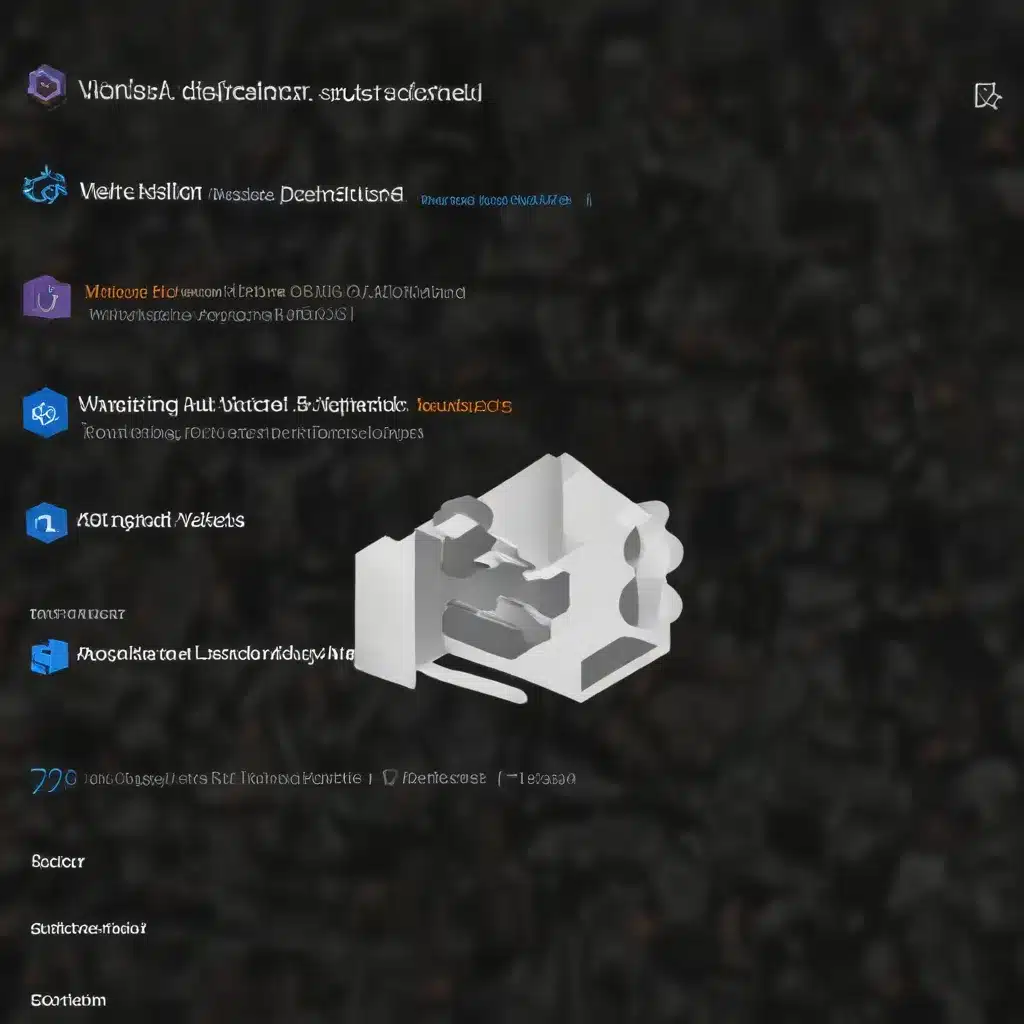
Understanding WDAC and Its Challenges
As a seasoned IT professional, you’ve likely encountered your fair share of technology challenges, and one that has been particularly vexing for many is the implementation of Windows Defender Application Control (WDAC) on Windows 11 systems. WDAC is a powerful security feature that aims to prevent the execution of untrusted or malicious software, but its deployment and configuration can be complex and often frustrating.
One of the primary issues that IT professionals face when deploying WDAC is the difficulty in creating reliable and comprehensive policies. The WDAC Wizard, touted as a savior for policy creation, is often found to be unreliable, with users reporting that trusted publishers and file hashes fail to be added consistently, and that the generated XML policies sometimes strip out crucial rules during updates.
This inconsistency has led many IT teams to opt for the more familiar AppLocker solution, which allows for the creation and management of application control policies directly within local group policy. The ability to export AppLocker policies as XML and ingest them into Microsoft Intune makes it a more straightforward option for many organizations.
However, as Microsoft continues to push WDAC as the preferred solution for application control, it’s essential for IT professionals to understand the nuances of this technology and learn how to overcome the challenges associated with its deployment and management.
Recent Improvements to WDAC in Windows 10 20H2 and Beyond
Fortunately, recent updates to WDAC have addressed some of the key pain points that early adopters experienced. In the Windows 10 20H2 release and beyond, Microsoft has introduced several improvements that make WDAC a more viable option for IT teams.
One of the significant changes is the ability to build WDAC policies on Windows 10 Professional systems, rather than being restricted to the Enterprise edition. This added flexibility allows more organizations to experiment with WDAC and develop policies that align with their specific needs.
Additionally, the DefaultWindows_Audit.xml template policy provided by Microsoft has been a valuable starting point for many IT professionals. This policy allows in-box kernel and user-mode code to boot, execute, and update without issue, providing a solid foundation for building more comprehensive WDAC policies.
Crafting a Simple, Secure WDAC Policy
To demonstrate the improved capabilities of WDAC, let’s walk through the process of creating a simple yet highly secure policy that can be deployed on a Windows 11 system.
Step 1: Modify the DefaultWindows_Audit.xml Policy
As mentioned, the DefaultWindows_Audit.xml policy provided by Microsoft is an excellent starting point. We’ll make a few modifications to this template to create a policy that aligns with our specific requirements.
- Disable Script Enforcement Options: We’ll add the following line to the policy to disable script enforcement options, allowing unsigned PowerShell scripts and interactive PowerShell to run without restriction:
“`xml
“`
- Disable .NET Application and Library Enforcement: We’ll remove the following line from the policy, as it enables enforcement for .NET applications and dynamically-loaded libraries, which can cause issues with certain applications:
“`xml
“`
Step 2: Merge in Microsoft’s Recommended Block Rules
In addition to the modified DefaultWindows_Audit.xml policy, we’ll incorporate the Microsoft-recommended block rules to further enhance the security of our WDAC policy.
Step 3: Merge and Deploy the Policy
Once we’ve made the necessary modifications, we can use the following PowerShell cmdlets to merge the policies and deploy them to our Windows 11 system:
“`powershell
$DefaultWindowsAudit = ‘DefaultWindows_Audit.xml’
$MicrosoftRecommendedBlockRules = ‘Microsoft_Recommended_BlockRules.xml’
$MergedPolicy = ‘MergedWDACPolicy.xml’
ConvertFrom-CIPolicy -XmlFilePath $DefaultWindowsAudit, $MicrosoftRecommendedBlockRules -OutputFilePath $MergedPolicy
Set-CIPolicy -FilePath $MergedPolicy
“`
Step 4: Audit and Enforce the Policy
After deploying the policy, we’ll first run it in audit mode to ensure that there are no unexpected issues or application compatibility problems. Once we’re satisfied with the results, we can then remove the “Enabled:Audit Mode” rule to place WDAC into enforcement mode.
Monitoring and Maintaining the WDAC Policy
With the WDAC policy in place, it’s essential to monitor its performance and address any issues that may arise. We can keep an eye on CodeIntegrity event log events to identify any block events, which will help us fine-tune the policy as needed.
Additionally, there are further steps that can be taken to secure the integrity of the deployed WDAC policy, such as policy signing and UEFI policy protection, but these may not be necessary for all use cases.
The Benefits of a Robust WDAC Implementation
Implementing a well-designed WDAC policy can provide significant security benefits for your organization. By enforcing code integrity, you can effectively mitigate a large number of attack techniques, reducing the burden on your security teams to detect and respond to a wide range of threats.
As a security practitioner, I’ve seen firsthand the power of WDAC in protecting systems from external and even self-inflicted threats. When properly configured, WDAC can serve as a crucial layer of defense, complementing other security measures and providing a reliable, built-in solution for protecting your Windows 11 environments.
While the initial deployment of WDAC may seem daunting, the improvements made in recent Windows 10 and 11 releases have made it a more viable and practical option for IT professionals. By following the steps outlined in this article, you can create a simple yet highly secure WDAC policy that can be easily deployed and maintained, providing your organization with enhanced protection against a wide range of security threats.
To learn more about IT Fix and our comprehensive suite of IT solutions, including WDAC deployment and management, please visit our website at https://itfix.org.uk/.












